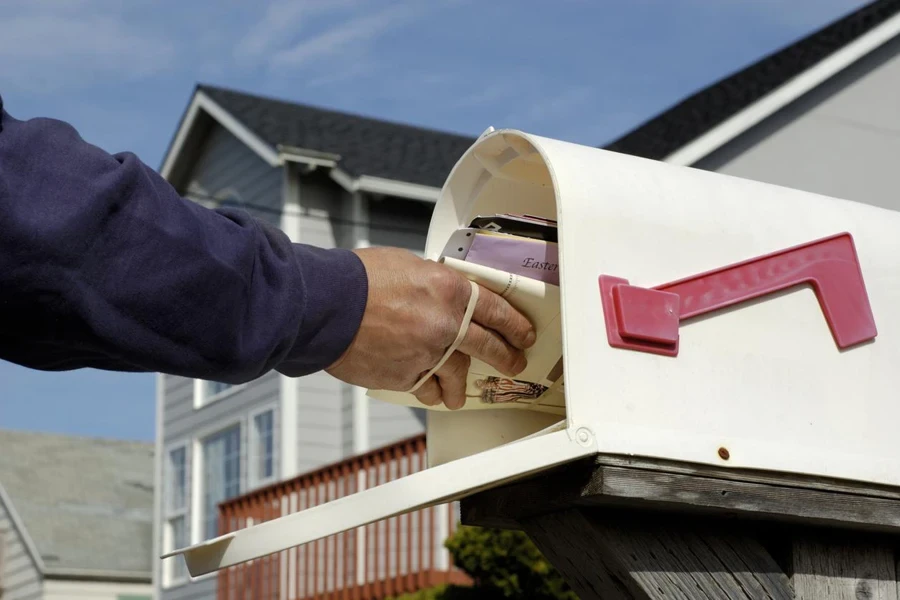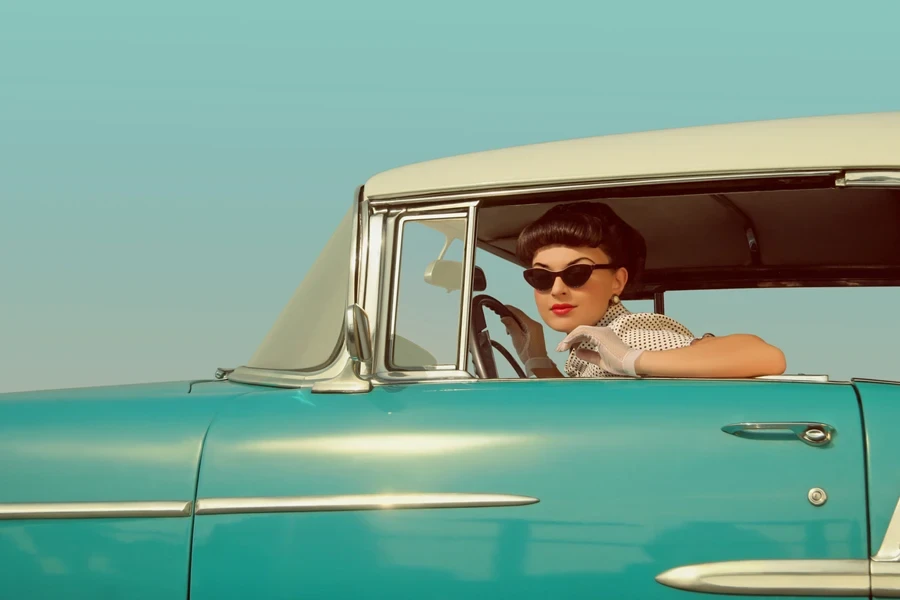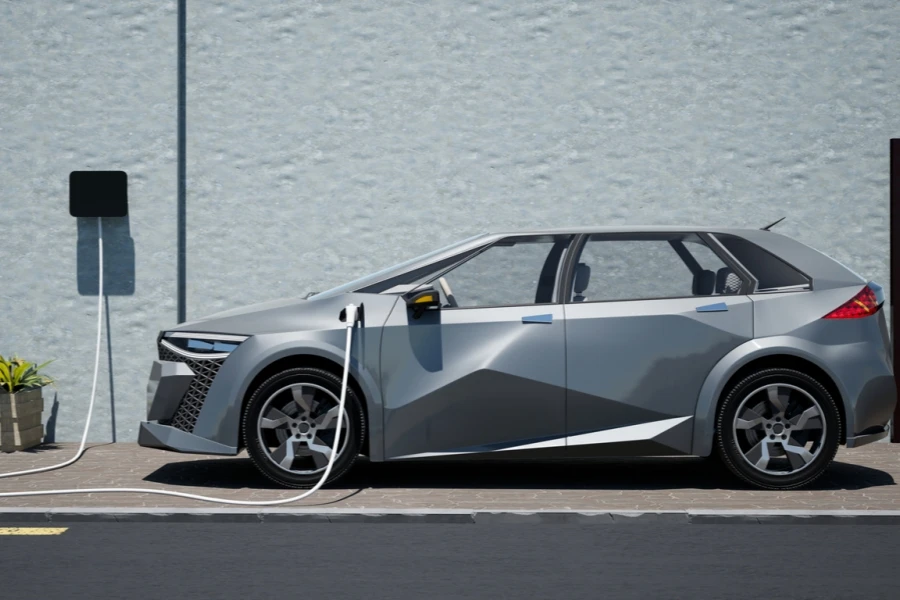The first half of 2024 brings with it a surge of transformative consumer trends. As a business leader, you have two choices: ride the wave or get left behind. In a world where authenticity, personalization, and social consciousness reign supreme, adapting to these trends is not just a smart move—it’s a survival strategy.
From the rise of gifting as a loyalty-boosting tool to the surprising resurgence of direct mail marketing, from the power of nostalgia to the untapped potential of B2B influencers, these six trends hold the key to unlocking new growth opportunities. So, grab your surfboard and get ready to catch the consumer trend wave of 2024.
Table of Contents
● Gifting Strategies: A New Avenue for Customer Loyalty and Retention
● Direct Mail Marketing: A Resurgence of Opportunity
● Nostalgic Marketing: Bringing Back the Good Old Days
● The Rise of Audio Search and Podcast Discoverability
● B2B Influencer Marketing: An Untapped Frontier for Growth
● Eco-Friendly Luxury: Sustainable Indulgence for the Discerning Consumer
Trend 1: Gifting Strategies: A New Avenue for Customer Loyalty and Retention
The gifting industry has been making waves, with companies like 1-800-FLOWERS, &Open, and Goody leading the charge. As an additional acquisition channel for early-stage D2C brands and an integrated shopping mall for Gen Z consumers, Goody has seen remarkable growth since its launch in 2020, with its revenue increasing by 500% year-over-year and has raised $32m so far. The company has attracted high-profile clients such as Microsoft, Salesforce, and Airbnb, who use the platform to send thoughtful gifts to their employees, clients, and prospects.
Goody’s success can be attributed to its data-driven approach to gifting. The platform uses artificial intelligence and machine learning to analyze recipient preferences and suggest appropriate gifts, ensuring that each present feels tailored and meaningful. As more businesses recognize the power of personalized gifting, gifting is expected to become an even more powerful tool for cultivating stronger customer and employee relationships.

According to a recent study by the Gifting Experts Association, the global gifting market is projected to reach $850 billion by 2024. This growth can be attributed to the increasing recognition of gifting as a strategic tool for building loyalty and retention. Companies are leveraging gifting to target employees, especially given the current challenges in worker retention and the high cost of replacing an employee, which averages about seven months of their salary. The rising trend extends beyond the office, too: Companies are using strategic gifting to nurture customer relationships and stand out in a crowded market. In 2024, we expect to see more brands leveraging the power of thoughtful, personalized presents to build strong connections with their target audiences.
Trend 2: Direct Mail Marketing: A Resurgence of Opportunity
Just when you thought direct mail marketing was a thing of the past, it’s making a comeback in a big way. According to Statista, the Direct Mail Advertising market worldwide is expected to experience an annual growth rate (CAGR 2024-2029) of 1.14%. The United States will generate the highest ad spending, with $20.38 billion in 2024. As digital marketing channels become oversaturated, businesses are rediscovering the power of tangible, personalized marketing materials.

The key to success in this arena is innovation. From interactive elements like voice-activated call-to-actions (CTAs) to immersive virtual reality (VR) experiences, brands are finding new ways to engage recipients and stand out in the mailbox. One example of successful direct mail marketing comes from the clothing retailer, Stitch Fix. In 2022, Stitch Fix launched a direct mail campaign targeting lapsed customers. The mailers featured personalized style recommendations based on each recipient’s previous purchases and preferences. The campaign also included a unique referral code that customers could share with friends and family for a discount on their next purchase. The results were impressive: Stitch Fix saw a 20% increase in reactivation rates among lapsed customers and a 15% increase in referral purchases. By leveraging personalization and incentivizing referrals, Stitch Fix was able to re-engage dormant customers and acquire new ones through direct mail.
Old-school postcards are also a niche in the revival. Direct mail marketing companies specializing in postcards, such as PostcardMania, reportedly generated approximately $84 million in revenue last year.
Trend 3: Nostalgic Marketing: Bringing Back the good old days
In uncertain times, people crave the comfort of familiarity. That’s where nostalgia marketing comes in—by tapping into fond memories of the past, brands can create an emotional connection with their audience. From retro packaging to ’90s-inspired fashion collections, companies are leveraging the power of nostalgia to stand out and drive engagement.
Take, for instance, the gnarly success of Fanta’s limited-edition “Fanta Grape” release in 2023. The brand brought back the fan-favorite flavor from the ’90s, complete with retro packaging and a series of commercials featuring ’90s-style animation and slang. The campaign went viral on TikTok, with users creating their own nostalgia-themed content using the hashtag #FantaGrapeIsBack. More brands will jump on the nostalgia bandwagon in 2024, using the past as a springboard for building customer loyalty and boosting sales.

By leveraging the power of nostalgia marketing, brands can create campaigns that resonate with their target audiences on an emotional level, driving engagement, sales, and brand loyalty.
Trend 4: The Evolving Landscape of Audio Search and Podcast Discoverability
Audio content has exploded in popularity over the past few years, and the trend shows no signs of slowing down. In 2022, there were over 2 million active podcasts, and that number is expected to grow to 3 million by 2024. With this surge in content comes a new challenge: discoverability. How can users find the podcasts that align with their interests in a sea of options?
Enter the world of audio search. Much like how Google changed the game for web search, companies are now developing sophisticated algorithms to help users discover new podcasts based on their listening history, preferences, and even their mood.
One major player in this space is Spotify. In 2023, the company launched a new feature called “Podcast Explorer,” which uses machine learning to analyze users’ listening habits and recommend new podcasts based on their interests. The feature has been a hit, with users reporting a 25% increase in podcast discovery and engagement. Another company making waves in the audio search space is Podz. Founded in 2021, Podz uses AI to analyze podcast content and create “highlights” that give users a sneak peek of each episode. These highlights are then used to power personalized recommendations and help users discover new shows that match their interests.

For businesses, this presents a golden opportunity to reach engaged audiences through branded audio content. By launching a podcast that showcases industry expertise and thought leadership, companies can establish themselves as go-to resources in their field. The key is optimizing for audio search, using relevant keywords and partnering with platforms that can boost discoverability.
Trend 5: B2B Influencer Marketing: An Untapped Frontier for Growth
When you hear the term “influencer marketing,” you might picture fashionistas showcasing the latest clothing trends or foodies snapping pics of their avocado toast. But influencer marketing isn’t just for B2C brands anymore. B2B influencer campaigns have been shown to generate 11 times higher ROI than traditional digital marketing efforts.
B2B influencer marketing is all about partnering with industry experts, thought leaders, and even your own employees to create content that resonates with your target audience. It’s a way to build trust, establish credibility, and ultimately drive growth for your business.
According to a recent study by Onalytica, 78% of B2B marketers believe that influencer marketing will become increasingly important in the coming years. And it’s no wonder why: B2B influencer marketing has been shown to drive 11 times higher ROI than traditional forms of digital marketing.

One company that’s crushing the B2B influencer game is IBM. In 2019, they launched the “IBM Influencer Program,” which brings together a network of industry experts to create content around key topics like AI, cloud computing, and cybersecurity. The program has been a massive success, with influencer content driving 10 times more engagement than IBM’s own branded content.
Another example of B2B influencer marketing in action comes from the social media management platform, Hootsuite. In 2020, they launched the “Hootsuite Academy,” a free online learning platform that features courses taught by industry experts. By partnering with influencers to create educational content, Hootsuite was able to establish themselves as a go-to resource for social media marketers and drive a 30% increase in new user sign-ups.
By collaborating with respected voices to create valuable content, these companies have established themselves as industry authorities and driven measurable results. In 2024, we can expect to see more B2B brands harnessing the power of influencer partnerships to connect with their target audiences and fuel growth.
Trend 6: Eco-Friendly Luxury: Sustainable Indulgence for the Discerning Consumer
Who says luxury and sustainability can’t go hand in hand? Today’s consumers are demanding more from their favorite brands, and that includes a commitment to eco-friendly practices and materials. The rise of eco-friendly luxury is a trend that’s been bubbling up for years, but it’s set to reach a boiling point in the coming months. From high-end fashion houses using recycled fabrics to luxury car brands developing electric vehicles, sustainability is no longer a nice-to-have—it’s a must-have. Brands that fail to adapt to this new reality risk losing market share to their more environmentally-conscious competitors.

Tesla’s latest offering, the Model S Plaid Plus, exemplifies this trend with its combination of lightning-fast speed and interior crafted from recyclable, plant-based materials. The car even features a “vegan mode,” which ensures that all onboard amenities, from the seat coverings to the steering wheel, are free from animal products.
But it’s not just the automotive industry that’s embracing sustainable luxury. In the world of fashion, brands like Stella McCartney and Reformation have long been known for their commitment to eco-friendly materials and ethical production practices. As we head into 2024, expect to see more luxury brands following suit, with collections that prioritize sustainability without sacrificing style.
By embracing the trend of eco-friendly luxury, brands can appeal to a growing segment of consumers who are willing to pay a premium for products that align with their values. As sustainability becomes increasingly important to buyers across industries, companies that prioritize eco-friendliness will be well-positioned for success in 2024 and beyond.

The business landscape of 2024 is one of rapid change and endless possibility. By staying attuned to the six emerging consumer trends outlined in this article—strategic gifting, direct mail renaissance, nostalgic marketing, audio search optimization, B2B influencer partnerships, and eco-friendly luxury—companies can position themselves for success in the new year and beyond.
Adapting to these trends will require a willingness to experiment, innovate, and think outside the box. But for businesses that are up to the challenge, the rewards are substantial: stronger customer relationships, increased brand loyalty, and new avenues for growth. So as we step into 2024, let’s embrace the change and seize the opportunities that await. The future belongs to the bold.




